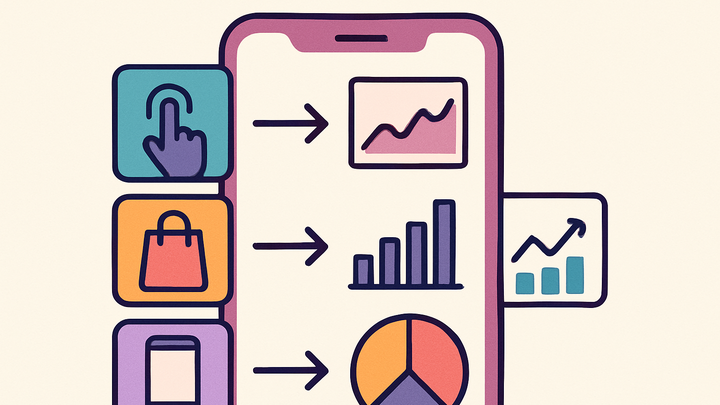Published on 2025-06-22T06:36:44Z
What is an App Event? Examples and Use Cases
An App Event is a specific user interaction or action within a mobile or web application that developers and analysts track to understand user behavior. Events can range from simple actions like opening the app to complex ones like completing a purchase or sharing content. Tracking events provides granular insights into how users engage with features, helping teams optimize experiences, measure conversions, and drive data-informed decisions. Modern analytics platforms like Google Analytics 4 (GA4) and cookie-free solutions like PlainSignal rely on event-based models to deliver real-time, actionable data.
App event
A user interaction within an app (e.g., button tap, purchase) tracked to analyze engagement, conversions, and behavior.
Why App Events Matter
App events capture granular user interactions, enabling product, marketing, and analytics teams to:
-
User engagement tracking
Measure how users interact with features, such as button taps, video plays, or form submissions.
-
Conversion measurement
Track key actions like “purchase” or “sign_up” to evaluate campaign and funnel effectiveness.
-
Feature optimization
Analyze event trends to uncover usage patterns, guiding product improvements and prioritization.
Common Types of App Events
Different analytics platforms categorize events into preset and custom types:
-
Automatically collected events
Default events gathered by platforms (e.g.,
app_open,session_startin GA4) without extra code. -
Enhanced measurement events
Click, scroll, file download, and video engagement events captured with minimal configuration.
-
Custom events
Developer-defined events tailored to specific business logic, such as
level_upin a game orapply_couponin commerce apps.
Implementing App Events in Analytics Platforms
Setup varies by provider. Below are examples for GA4 and PlainSignal:
-
Google analytics 4 (GA4)
GA4 uses an event-driven model via
gtag.jsor Firebase SDK. Example usinggtag.js:-
Gtag.js example
<script async src="https://www.googletagmanager.com/gtag/js?id=G-XXXXXXX"></script> <script> window.dataLayer = window.dataLayer || []; function gtag(){dataLayer.push(arguments);} gtag('js', new Date()); gtag('config', 'G-XXXXXXX'); gtag('event', 'button_click', { 'button_name': 'subscribe' }); </script>
-
-
PlainSignal (cookie-free analytics)
PlainSignal offers a lightweight, privacy-focused script. Example integration:
-
Integration snippet
<link rel="preconnect" href="//eu.plainsignal.com/" crossorigin /> <script defer data-do="yourwebsitedomain.com" data-id="0GQV1xmtzQQ" data-api="//eu.plainsignal.com" src="//cdn.plainsignal.com/plainsignal-min.js"></script>
-
Best Practices for App Event Tracking
Ensure reliable, consistent data by following these guidelines:
-
Consistent naming conventions
Adopt clear, standardized names (e.g.,
event_category.event_action) to avoid ambiguity. -
Meaningful parameters
Include relevant parameters (e.g.,
item_id,value) to add context to each event. -
Privacy and compliance
Avoid collecting personal data. Adhere to GDPR, CCPA by anonymizing or hashing user identifiers.
-
Testing and validation
Use debug modes and real-time dashboards to confirm events fire as intended before analysis.
